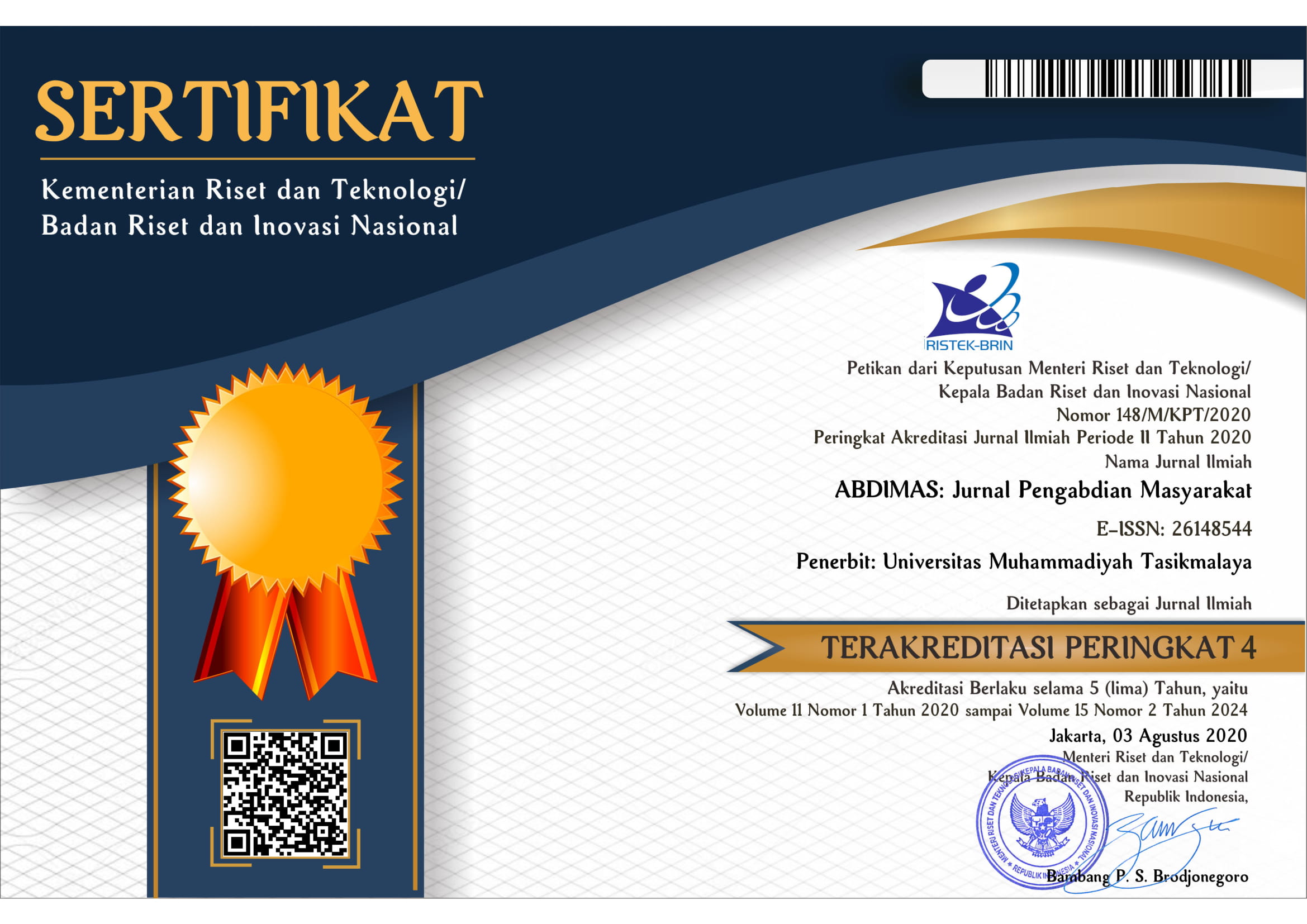Empowering Cihideung Village Farmers in Using Rose Flowers as Pharmaceutical Raw Materials
DOI:
https://doi.org/10.35568/abdimas.v6i4.4070Keywords:
Roses, workshops, Cihideung villages, pharmaceuticalAbstract
Roses (Rosa Damascene Mill) are the most prominent crops of the Cihideung Village community. During the COVID-19 pandemic, flower farmers needed help with marketing, so many of the roses were unused. These empowerment activities aim to increase the public's knowledge and capacity to use roses as a pharmaceutical. The activities are carried out offline in the form of workshops. The raw materials are fresh rose flowers, tools, ingredients for making rose water infusions, soap, and oil. Analysis of outcome was assessed using questionnaires before and after the workshop as well as observation of the enthusiasm of participants during the activity. The results showed an improvement in the knowledge and skills of the public regarding the use of roses. The community also provided guides for the improvement of their capacity independently and access to the technical video through YouTube. Activity publications are delivered in digital media as a promotion. The full support of the provincial government and local villages will strengthen the synergy and sustainability of these activities, and hopefully, in the future, this knowledge can improve and become an independent enterprise of the community of Cihideung Villages.
Downloads
References
Boskabady, M. H., Shafei, M. N., Saberi, Z., & Amini, S. (2011). Pharmacological Effects of Rosa Damascena. 14(4), 295–307.
Bruno, L. (2019). 済無No Title No Title. In Journal of Chemical Information and Modeling (Vol. 53, Issue 9). https://doi.org/10.1017/CBO9781107415324.004
Çiçek, H., Kaya, H. S., Kilic, C., Savas, M., & Ravichandran, S. (2022). Medical Effects of Products Obtained From Wild Rose Plant. Journal of Chemistry and Nutritional Biochemistry, 3(2), 59–64. https://doi.org/10.48185/jcnb.v3i2.561
Damayanti, A., & Fitriana, A. (n.d.). Jurnal Bahan Alam Terbarukan. 1(2), 1–8.
Fruits, L. (2009). Variations in Chemical Compositions of Rosa damascena Mill . and Rosa Variations in Chemical Compositions of Rosa damascena Mill . and Rosa canina L . Fruits. November 2008. https://doi.org/10.17221/5/2009-CJFS
Hongratanaworakit, T. (2009). Relaxing effect of rose oil on humans. Natural Product Communications, 4(2), 291–296. https://doi.org/10.1177/1934578x0900400226
Khan, M., & Rehman, S. (2005). Extraction and analysis of essential oil of Rosa species. Int. J. Agric. Biol, Table I, 973–974. http://scholar.google.com/scholar?hl=en&btnG=Search&q=intitle:Extraction+and+Analysis+of+Essential+Oil+of+Rosa+species#0
Meena, B. (2005). Chemical Composition of Rose Water Volatiles Chemical Composition of Rose Water Volatiles. May. https://doi.org/10.1080/10412905.2005.9698897
Mohebitabar, S., Shirazi, M., Bioos, S., & Rahimi, R. (2017). Therapeutic efficacy of rose oil : A comprehensive review of clinical evidence. 7(3), 206–213.
Priyanto, J. A., & Suseno, S. H. (2020). Partisipasi Masyarakat Desa Cihideung Ilir Dalam Perencanaan Pembangunan Desa Sebelum dan Sesudah Wabah Covid-19 ( Society Participation Of Cihideung Ilir Community In Village Development Planning Before And After During. 2(5), 701–708.
Yapari, S., Empowerment, C., Supporting, I. N., Of, D., Village, T., & Barat, B. (2017). Pemberdayaan Masyarakat dalam Mendukung Pengembangan Desa Wisata Cihideung ,. 3, 59–74.














